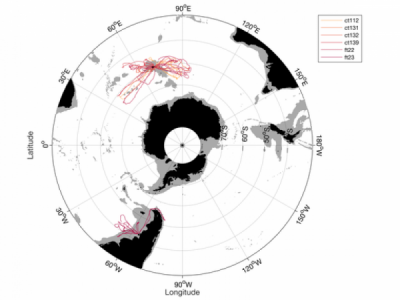
Posted on May 22, 2019
It is with great excitement that we are finally able to present you a brand new MEOP product, the MEOP-SMS database.
The MEOP-SMS database is a collection of CTD data gathered with CTD-SRDLs attached to elephant seals. The CTD-SRDLs were set in continuous recording mode, and could be recovered in the field, enabling retrieval of the entire CTD archive at the sampling frequency (0.5 Hz) for periods of several months. Instruments were deployed at the Kerguelen Islands and at Peninsula Valdes (Argentina) as part of the SO-MEMO program led by Christophe Guinet (CEBC/CNRS, France).
A set of 28 CTD-SRDL datasets is now available in the MEOP-SMS database, with a typical number of 50-100 profiles/day in the highly energetic oceanic regions around the Kerguelen Plateau and across the Argentine shelf break. With such a high sampling frequency, it becomes possible to observe directly the ocean submesoscale variabilibity for extended periods of time.
A description of the dataset and the post-processing can be found in Siegelman et al., 2019. In this study, an improved post-processing method is presented, useful for both low-resolution satellite-transmitted and full-resolution archived CTD profiles. This post-processing procedure includes the correction of systematic biases, the correction of the thermal-mass effect on conductivity and temperature measurements and the removal of density inversion. A summary of this new procedure is provided HERE.
Updated estimates of CTD data accuracy are also proposed, based on detailed comparisons between high- and low-resolution CTD data. For high-resolution data, accuracies are estimated to be of ±0.02°C for temperature and ±0.03 psu for salinity. For low-resolution data, transmitted data points have similar accuracies, however, reconstructed temperature profiles have a reduced accuracy associated with the vertical interpolation of ±0.04°C and a nearly unchanged salinity accuracy of ±0.03 psu (see Siegelman et al., 2019).
Check out the News Elephant Seals Enjoy Fine-Scale Fronts that describes the recent study of Lia Siegelman to find an example of how these unique data can be used to directly observe the submesoscale structure of the Southern Ocean.
Source: meop.net





